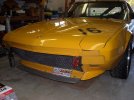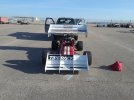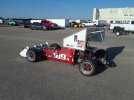Alain - The Red Scorpion
True Classic
Thank you for the input. Confirms my "theory" that a ducktail/spoiler is useless, except for looks. I should have mentioned that I have entered my Vintage prepared X (still street legal) in its first event. With AVO coilovers and wider wheels/tires, it has done well, considering its still stock engine and transmission.I agree with the turbulence theory over the trunk lid, here is a still pic from a video I took at 120kph of short wool threads taped to the lid and the edge of the engine cover of my track X to test a small boot lip spoiler. The threads moved around a bit, but quite often pointed forward rather than backward. I then did similar tests with a higher spoiler with string on higher posts. It looked like it may be a bit more effective, but still of doubtful benefit. I did go ahead andView attachment 53590View attachment 53591 fit a spoiler mainly just for looks, as expected, it has made no difference to track times.



